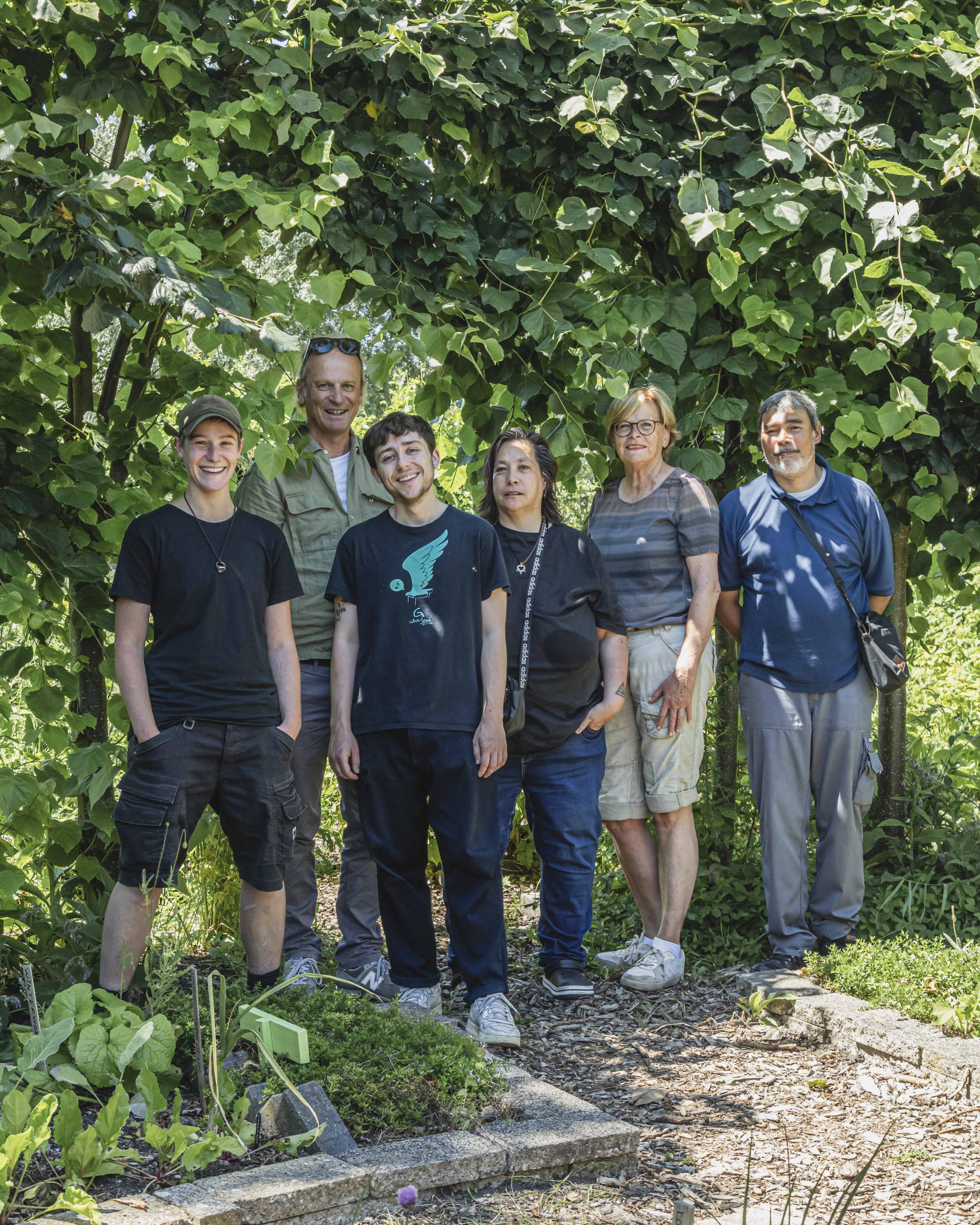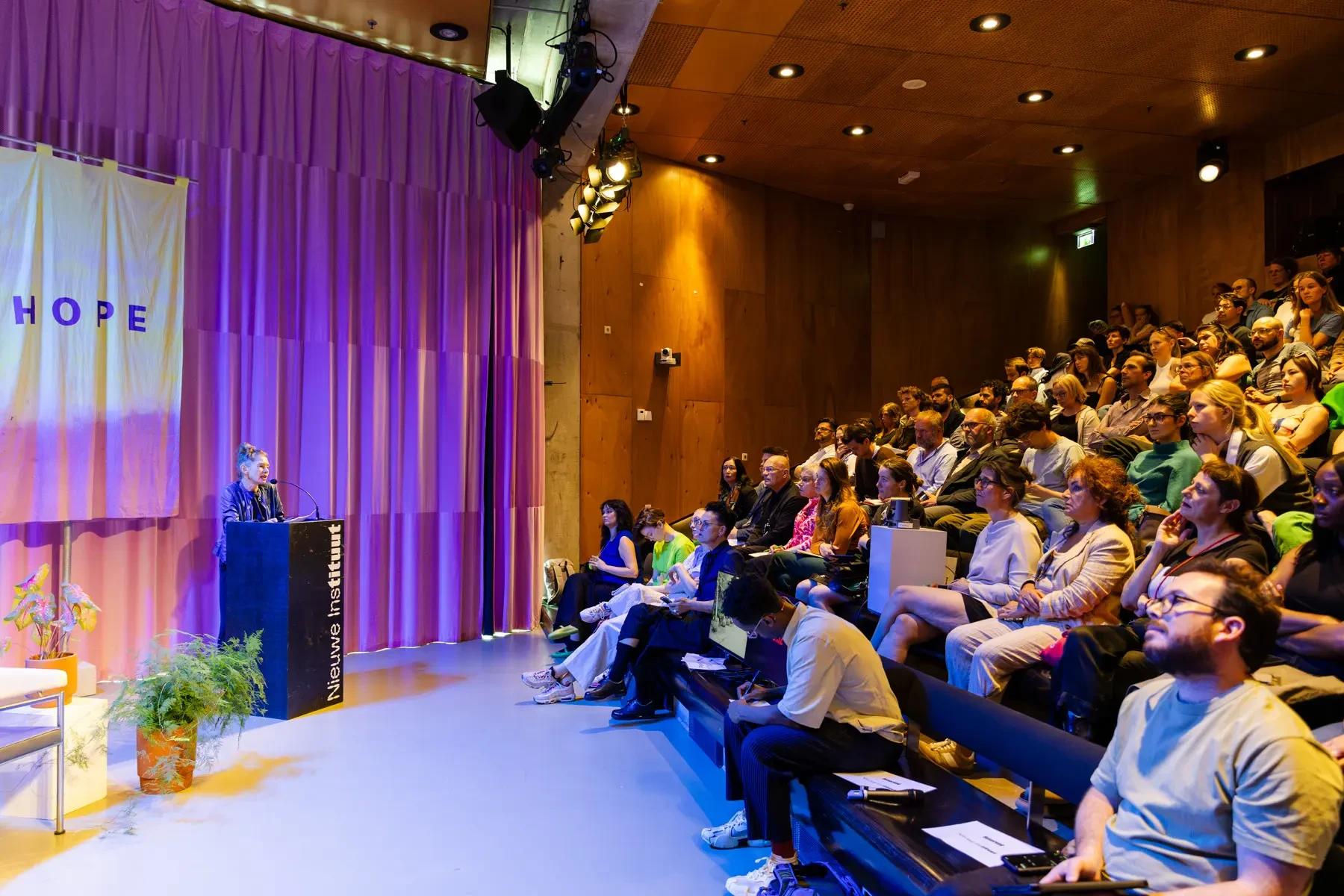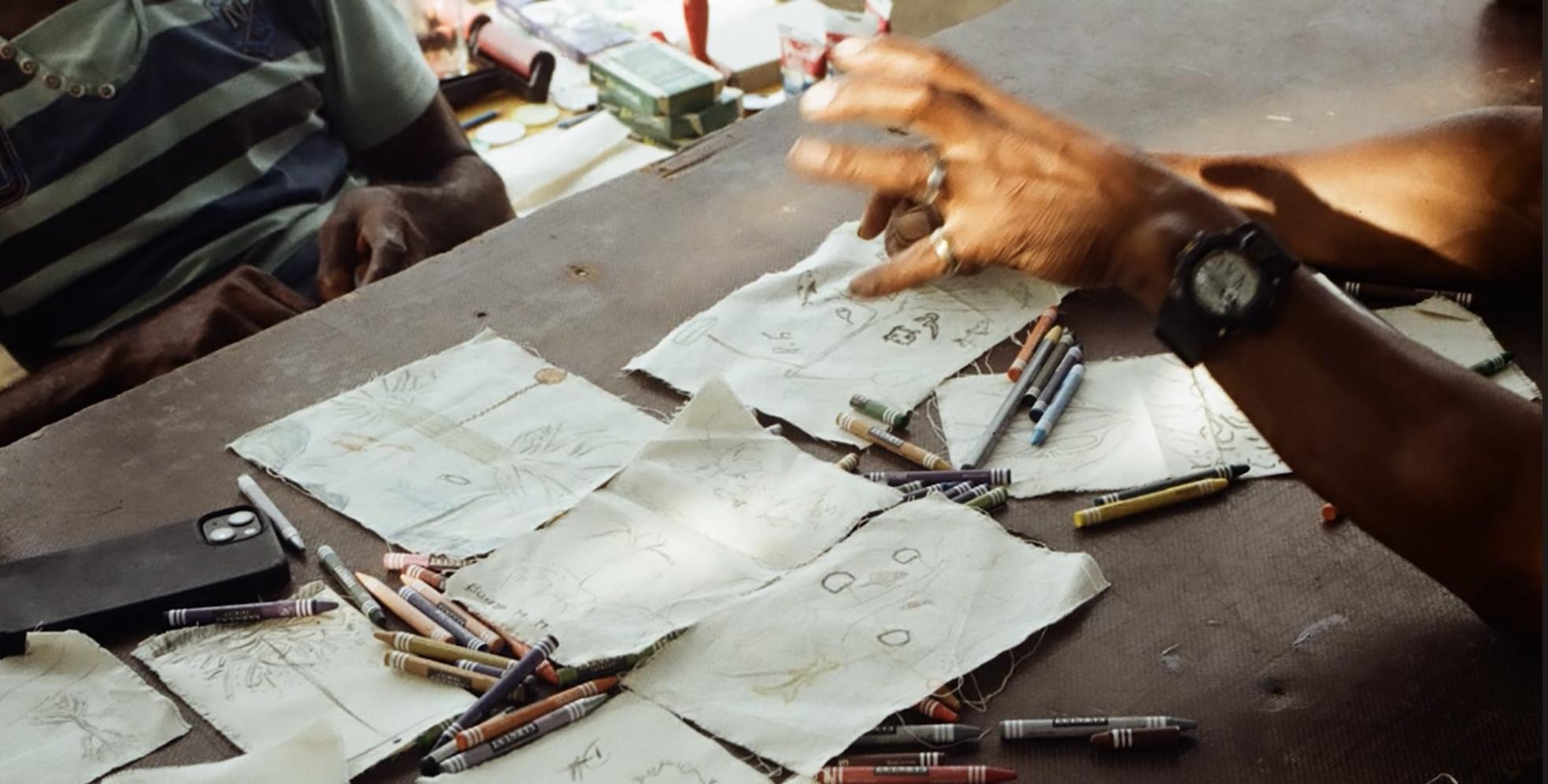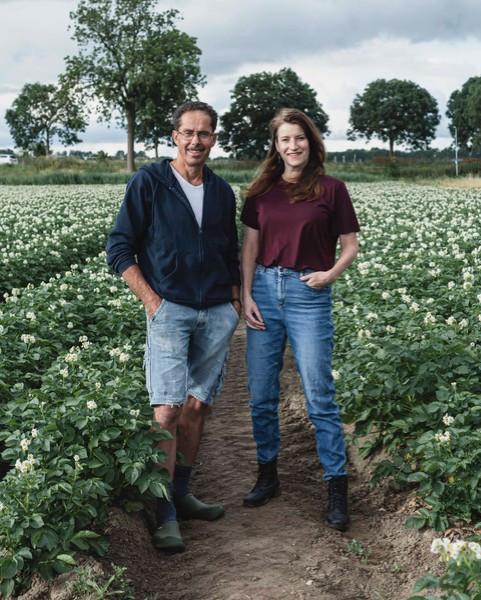Who builds towards a green future on a daily basis? To show how big ideas and visions find their way into reality, "Botanical Monuments" is part of this edition of the biennial: a collection of Rotterdams community initiatives around urban nature. They represent the ambition of the IABR to change the relationship between architecture and nature. But how does this ambition come to life in and around the city, who are the people behind big visions and what can we learn from them? Sabine and Jocelyn create the series "Seed Sowers" and engage with those taking steps towards an architecture that, in collaboration with nature, builds for future generations.
One of the Botanical Monuments is the Voedseltuin, located right in front of the IABR office. We were welcomed with homemade beetroot flatbread and coffee in a space filled with enthusiastic volunteers. Erik, the director, tells us more: “The Voedseltuin was established 14 years ago, starting on a filled-in harbor in Rotterdam, where the first Voedselbank (a food bank providing groceries to those in financial need) in the Netherlands was founded. Now, the garden produces food for about 170 people, working from a simple idea: producing one's own food in the backyard, together with the clients and suppliers of the Voedselbank. The abandoned area was once known as a red-light district, and we were designated by the city as the ‘place-makers’.”
By 2024, people on welfare benefits had collaborated over 7000 square meters of formerly vacant land to develop a production garden, learning-work garden, city garden, and incubator space, but this success did not come easily. Erik, who has a sharp vision for creating such a place, explains, "To get a grass-root project like this off the ground, more is needed than just a plan and an ideal. It's crucial to understand the value of such a place and communicate this to different target groups." Over the years, Erik has navigated various roles, requiring him to speak different 'languages'. "Each role demands different words. To convey our relevance to an architect or the city, I speak in broader, overarching terms and use maps and other visual aids. A healthcare institution, on the other hand, requires a more day-to-day approach, focusing on programs, schedules, and personal interactions," explains Erik.
This transdisciplinary approach to placemaking has borne fruit. The garden has grown into a thriving environment that collaborates with twelve Rotterdam healthcare institutions. It serves simultaneously as a production site, area development project, social workplace, recreational area, ecological hotspot, and experimental incubator for science and art. It is also a vital source of food for many Rotterdammers. Volunteers produce healthy food annually for hundreds of families on limited budgets.
Another aspect of 'placemaking,' according to Erik, involves building relationships. The slow and non-forced growth of a community. For Erik, the concept of community encompasses a wide range of social, commercial, and artistic connections to the Voedseltuin that have developed over the years. "Our team, consisting of a small number of garden guides, is the core of the community, as are the 60 to 80 volunteers who maintain the garden. Our collaboration partners, such as the food bank, healthcare institutions, welfare organizations, and of course the municipality, make up the second layer of what I consider our community. We also maintain good relationships with neighboring offices; mostly trendy, innovative architects, artists, designers, and developers who enjoy taking a walk in the garden during their break. They regularly come up with interesting collaboration proposals and initiatives that continually add new functions to the garden, from artworks to scientific and spatial experiments."
The way diverse groups of people get involved and contribute to the garden is remarkable and beautifully illustrates the approach Erik describes. He talks about entering different worlds, bringing them together, and creating relevance for all these groups in one place. “Transdisciplinary working is crucial—thinking beyond the boundaries of your own field and taking on multiple roles: an architect who thinks like a social worker, an artist who engages in social work. I hope the field of architecture will develop in this direction, because this is how you can truly make an impact,” says Erik. Curious about the Voedseltuin? Click here for their spot on the Botanical Monuments route. You can find opening hours, activities, and more information here.




